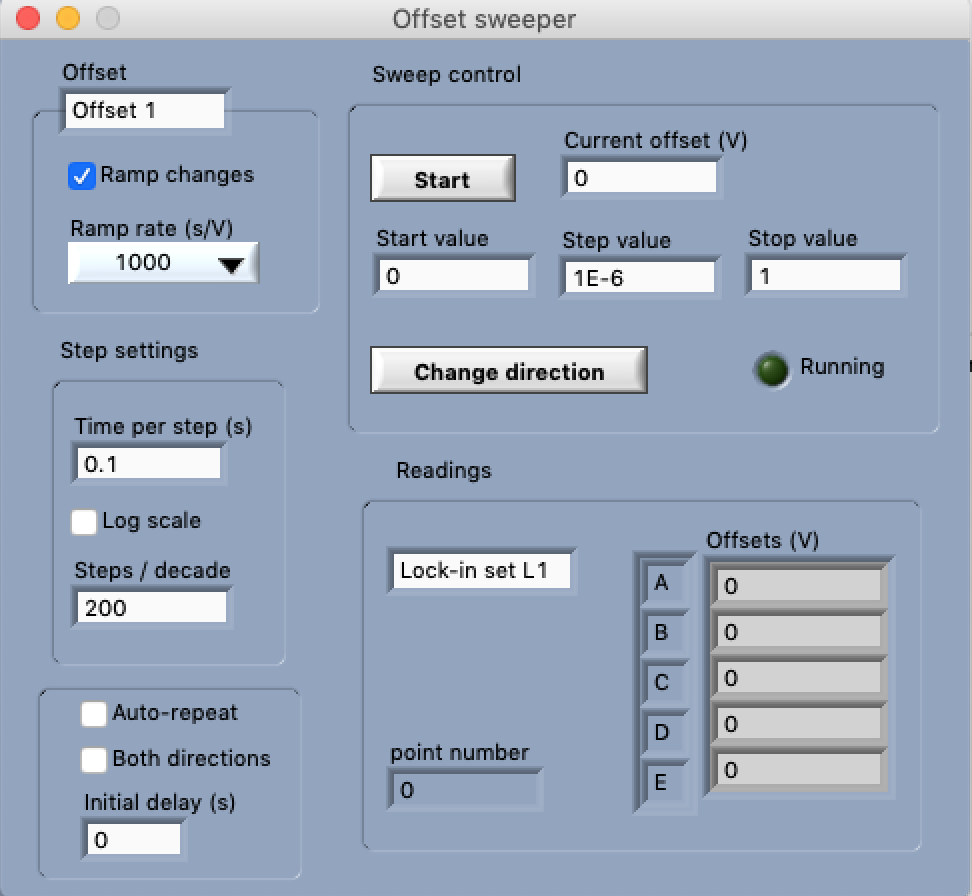- Sweep the dc offset using the Offset sweeper panel of the MCL app (you open the sweep panel from the popup menu in the lower right corner).
The “Ramp changes” checkbox is meant as a rough setting for smooth ramps in-between changing the offset value, so that the dc offset will never “step” completely.
- Do not use too high Exponential low-pass filter in the Lock-ins settings. Sometimes not using the exponential filter is the best.

- Choose a lock-in frequency that is not too low. The ramping dc offset will give a contribution at all frequencies, but the contribution decreases with increasing frequency. A frequency of 123 Hz or so is typically suitable. The faster you sweep the dc offset, the higher the lock-in frequency should be. But if the sample impedance is high, also consider the effect of capacitive displacement currents etc.
- When auto-ranging of the current measurement, the series resistor of the output voltage will change when the current range changes. Make sure to simultaneously measure the output current, either with the built-in current measurement or using the series resistor.
- Pick a series resistor that is suitable for the maximum current that you expect/want.
- Pick the voltage output range that best matches the range of voltage sweep (ac + dc offset within the output range).
- Explore using the ac coupling for the input if you have low impedance samples, but not for high impedance samples (you can also use one input that is dc coupled to measure the offset value and one that is ac coupled).
If you measure a known resistor with the above guides, you should be able to get a linear, ohmic behavior with sub-% variations of differential resistance. If not, please check if the current or voltage is deviating from expected behavior and if it is at a certain gain of voltage or current measurement.